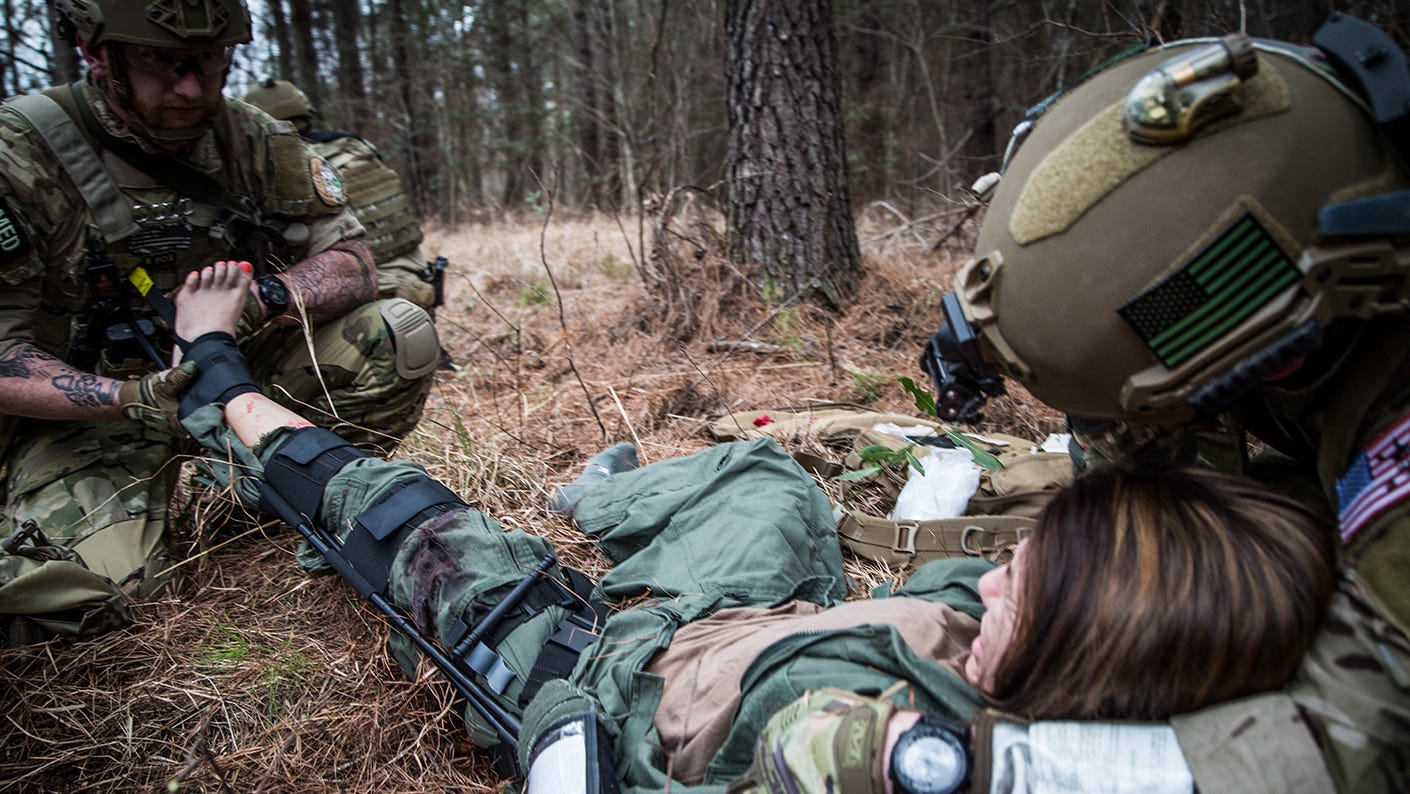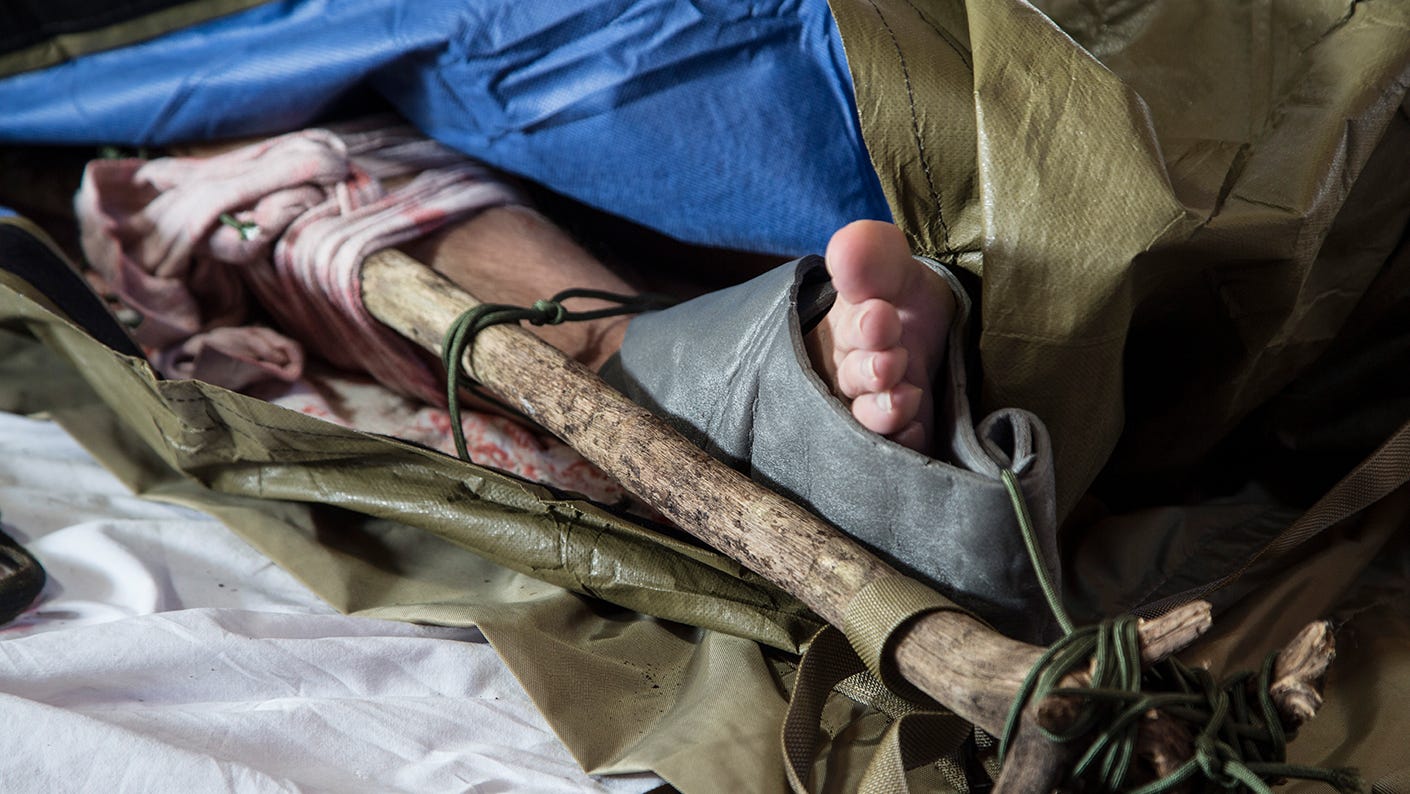Orthopedic Injuries in the Wilderness
By far, the most common emergencies in the wilderness are musculoskeletal (fractures, sprains, and strains). It is important to be able to distinguish a true emergency from an injury where you have some time to get yourself or your hunting partner out. The overall goal is to get them as functional as possible so they can at least assist in the walk out. With some of the knowledge and skills here, many injuries can be treated in the wilderness allowing for a safe self-recovery. With all the injuries and treatments below, make sure you seek professional evaluation as quickly as possible.

Sprains & Strains:
Sprains (stretching damage to ligament) and strains (stretching damage to muscle and tendon) occur in and around joints and are very common injuries in the wilderness. Common findings are pain and swelling at a joint and increased pain with moving that joint.
These injuries do not typically require emergency evacuation. It can be difficult to distinguish a sprain from a fracture so when in doubt, splint it and treat as a fracture.
Immediate treatment for sprains and strains is typically Rest, Ice, Compression and Elevation. If you don’t have the option to Rest, Ice and Elevate in the wilderness, then you need to focus on getting the injured person as functional as possible for the trip out. Here’s how:
- After making sure they don’t require emergency evacuation (see below), splint or wrap the joint with firm pressure starting below the joint and working your way up
- Do not wrap too tightly! Make sure to check pulses regularly and remove the wrap/splint if the injured person loses pulses, has numbness or increased pain
Dislocations:
Dislocations are injuries where the bone separates from its normal position in the joint. This can cause extreme discomfort and loss of function. Some dislocations, like shoulder, kneecap, and finger are relatively easy to relocate in the field. Others require urgent evacuation and advanced techniques to relocate.
Fractures:
Fractures typically cause immediate pain and swelling. Upper extremity fractures can be immobilized with a splint and the patient can usually walk out themselves. Lower extremity fractures will be painful when weight is applied. These cause a much bigger problem for evacuation, so be prepared to splint and provide assistance for the walk out. Relieve the patients load (backpack), splint, provide pain relief (if available) and use a makeshift crutch/cane.
Emergency evacuation:

While most injuries in the wilderness can be treated to allow the injured person to self-evacuate, some injuries require immediate evacuation in order to save the limb or minimize long term damage.
- If a there is a break in the skin from the bone breaking (open fracture) or bone sticking out, this needs immediate evacuation to minimize infection and preserve bone.
- If anything penetrates the joint (you may see clear fluid coming from the joint), this is called an open joint injury and requires immediate evacuation.
- When evaluating an injury, check for a pulse below the injury (see the picture for places to check). Always compare the pulse to the other side, if the pulse is decreased or absent, this is a medical emergency and the injured person must be evacuated immediately!
- Check for nerve function below the injury as well, one way to test is to touch both sides and see if the patient’s feeling is the same on both sides. Any decrease in feeling should be treated as an emergency and be evacuated immediately.
- Injuries to the spine (back and neck) or head should prompt the rescuer to minimize movement and rapidly evacuate.
- When in doubt, get them out!



Splinting:
Splinting the injured extremity can provide pain relief and prevent further harm. It can also help the person walk out on their own, making evacuation easier. A SAM splint can be used to splint just about any bone you could break; it even has splinting instructions printed on the back. Alternately, you can use whatever you have available (sticks, sleeping pad, etc..). Combine a SAM splint with an elastic wrap in your hunting pack and you are good to go.

- In general, the injured limb should be splinted in the position where they feel the most comfort.
- Make sure you prevent the joint above and the joint below from moving (ex: if the forearm is injured, prevent the elbow and wrist from moving).
- Make sure the injured person has a pulse before AND after you apply the splint.
- Recheck a pulse (below the injury) at least once per hour as swelling can cut off circulation.
- If a pulse cannot be detected, remove the splint/wrap, recheck pulse and re-apply the splint more loosely.
- For a more in-depth review of different splinting techniques check out this series of training videos from SAM.
- For a more robust kit, consider purpose built splints for neck, pelvis and femur fractures.
BIO
@nardoctor
@nardoctor is a physician who focuses on prehospital medicine in austere environments (deployed in military setting and out in the wilderness). For more information you can follow on instagram @nardoctor for more practical prehospital medical posts. For more information on products mentioned, go to narescue.com.
It’s our hope you can learn and laugh along with the expert voices we feature on this blog. We want to be clear that the opinions you see featured here are just that: opinions. The content belongs to the authors and is not necessarily the opinion of Vortex Optics.
To learn more about what you’ve read, please like, follow, and otherwise support our authors.










